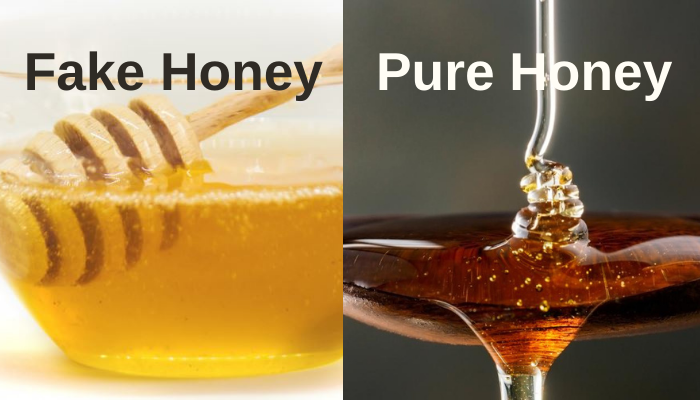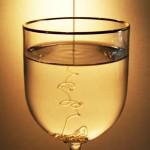How To Identify Pure Honey
How to Know Pure Honey
How do you test honey purity? What is Pure Honey? What is Fake, Impure or Adulterated Honey? Can you know the difference between fake and pure honey? What are the ways to distinguish between fake and pure honey? Does pure honey crystallize? What are the nutritional facts and health benefits of pure honey? Where can I find/ buy it? If you want to enjoy most of the benefits derived from honey, its purity is what you should consider before buying.
Most of the honey in the grocery stores isn’t exactly what the bees produce but fake and impure honey. Why? This is because by the high demand for pure honey resulting from its medicinal and nutrient value. Individuals and companies have taken advantage of this (high demand) in a move to make an extra buck by selling fake honey.

What is Real Honey? Pure honey is at times referred to as real, natural or organic honey. By just looking packaged honey on the shelves, it is almost impossible to tell whether the honey is fake or real. Pure honey is the natural product made of honey bees.It is the floral nectar gathered by the bees, processed, and stored in the comb inside the hives.
What is Fake Honey? Also referred to as impure, artificial or adulterated, fake honey is ‘honey’ that has been added glucose, dextrose, molasses, sugar syrup, invert sugar, flour, corn syrup, starch, or any other similar product, other than floral nectar.
Fake or Pure honey? How can you tell the difference?
What are the ways to distinguish between fake and real honey? The honey purity can, of course, be checked in the labs most probably by testing the pollen but that’s beyond the scope of this article. We are looking at simple ways by which an average day to day consumer can quickly tell if the honey he/she buying is fake or pure. The first and probably the most obvious step, for anyone who is concerned, are to check the label. The label contains some information that might be helpful. The table below is the most common and simple ways check for honey purity. Discover the ways to tell if that honey you want to buy is fake or real.
| TEST | PURE HONEY | FAKE HONEY |
| Stickiness | Not sticky if rubbed between fingers | Sticky due to additional sweeteners |
| Thickness | Fairly thick takes time to move from one side of the jar to the other | Fake honey is very light and runny |
| Taste | The taste vanishes in a matter of minutes Note: heating and cooling many times may alter the taste | Taste will remain for a little longer because of the presence of sugar |
| Smell/Aroma | Mild scent, probably the actual smell of the flowers from which the nectar was collected. Note: heating and cooling many times may alter the aroma1 | None or sour smell |
| Heating | Caramelize quickly and doesn’t form foam | Becomes bubbly and never caramelizes |
| Dissolving Method | Doesn’t get dissolved in water, will lump and settle at the bottom. Gets diluted when stirred for a while. Mixing in equal amounts of honey and methylated spirits, honey settles at the bottom | Stays incoherent and gets dissolved water right away. Dissolves in methylated spirits while making the solution milky |
| Flame Test.(Note: Depends on the amount of honey into which the matchstick is immersed ) | Matchstick lights even and easily after it has been immersed in pure honey | Matchstick does not light easily due to the presence of moisture. |
| Bread test | When spread on a slice of bread, the slice hardens in minutes | Wets the bread due to moisture content |
| Absorption Test | Few drops poured on bloating paper do not get absorbed. When poured on a piece of white cloth, it doesn’t leave stains | Gets absorbed in the bloating paper. Leaves stains on a white piece of cloth. |
| Impurities(depends on how fine the filtering process was) | Presence of impurities: dirty-looking particles, pollen and bee body parties | Absence of impurities |
| Egg yolk Test | When poured into a container with yolk alone and the mixture stirred together the yolk appears like it is cooked | Has no effect on the yolk |
There are also other ways to test for honey purity but they have raised debates. One major test that is controversial is the “ant test”. A group of individuals argues that ants are attracted to fake honey due to its sugar content but not attracted to pure honey due to a component that is a natural pest repellent. First and foremost, there is not much information available to back up the “natural pest repellent”. Further, it is argued that some dubious individuals mix the fake honey with a repulsive mixture that tends to irritate ants, therefore, keeping the ants off.
Not a lot of information exists to support this test and in addition, there is no known reason why the little creatures (ants) would favor processed sugar over real honey not forgetting the ants may not always be “available” at all places for a honey assessment (“no ants observed” may not necessarily mean pure honey). The reason why a sweet liquid is more attractive than another for the ants could also be due to other factors such as liquid density, flavors which vary depending on the floral types.
Does Pure Honey Crystallize?
The answer is yes! However, it is not necessarily always. This process is characterized by the honey becoming thick and cloudy. And more important, crystallization does not mean that your honey has gone bad. Why does it crystallize? This is because of sugary substances in honey. What happens during crystallization? During the process, glucose sugar separates from the water and becomes crystals, while on the hand fructose remains in a liquid form.
How long does it take to crystallize? The time it takes to crystallize depends on from few weeks to months after buying. Conditions under which the honey is stored-Hot or high temperatures slow the process while low or cooler speed up the process Type of honey (Glucose to fructose ratio)– The composition ratio of glucose and fructose in a floral nectar source is another factor that dictates the rate of honey crystallization. Honey types with a low fructose to glucose ratios, such as floral varietals Aster, Dandelion, Rata honey, and Clover crystallize faster compared to honey types with a high fructose to glucose ratio, for example, Acacia, Leatherwood, Longan, Eucalyptus, Honeydew, and Tupelo. [benefitsofhoney] The amount of processing-Did you buy your honey raw (straight from the honeycomb), semi-processed (for example strained), or processed?
There is proof that when stored properly raw pure honey, does not welcome crystallization compared to the processed honey. Bottom line- Considering that most grocery attendants won’t allow you to practically perform most of the above honey purity tests before buying your honey, the surest way is to visit a beekeeper in your local area and get pure honey from him or her. However, if you must buy your honey from the local stores is sure to check what is on the label as aforementioned. Remember that the more the honey is processed and refined the less the benefits. Raw, unfiltered honey is so far the healthiest choice for your health.
Health Benefits of Pure Honey & Nutritional Facts
Why does it have to be pure honey? What are the health benefits and nutritional facts of pure honey? Since ancient times, honey has been a well-liked food. Following are reasons why pure honey is considered nutritious and beneficial for your health.
Real Honey Nutritional Facts It is a source of energy –Pure honey provides carbohydrates, both fructose, and glucose, which the body converts to energy. A tablespoon of honey contains 17 grams of these natural sugars. Pure honey is a natural source of minerals and Vitamins: calcium, iron and potassium and vitamin C & B complex in addition to phytonutrients.
Pure Honey Benefits Treatment of Burns– According to researchers at the University of Florida, honey can effectively be used to treat burns. How? When honey is applied to burns, it reduces air contact, relieving pain and possibly infection. The New York Times supports this evaluation, saying honey is faster in treating small, non-serious burns compared to some antibiotic ointments
Antimicrobial Activity –According to research published by the National Institutes of Health, applying raw pure honey to infected wounds can diminish redness and swell as well as lowering healing time from the bacterial infection just as in the case of burns. This can be compared to what some antibiotics do. In addition, pure honey has been proven effective in the treatment of infective conjunctivitis (eye infection), reducing healing time for the infection as well as decreasing swelling and pus discharge. It has worked as a remedy for herpes sores. How do this antimicrobial and wound-healing come about? According to Dr. Mercola,
- Pure honey pulls fluid away from your wound
- The concentration of sugar content is quite of pure honey. In turn, the high concentration provides unfavorable conditions for the growth of microorganisms
- Glucose oxidase, an enzyme that is secreted into the nectar by the worker bees, releases low levels of hydrogen peroxide when the honey is applied to your wound
Other benefits of pure honey include immune booster for seasonal allergies, antioxidant, food additive, an ingredient for skin care, weight loss etc.
Where to buy Pure Honey- Where can I find Pure Honey? Where can pure honey be found and bought? Well, you already know the health benefits of real honey, you have learned some tips on how to choose between pure and impure honey…what next? You probably want to know where you can find pure honey. According to experts, the best place to buy 100% pure honey is a trusted local beekeeper. However, this type of honey can be quite expensive and at the same time, the beekeeper may be far away meaning that you will have travel miles to find him/her. However, you can also find pure honey in the local stores near you or online but it depends on where you reside. Some regions have honey purity laws while others do not have. The laws issue honey standards that require the mention of added substances
- In the European Union, any product sold as honey MUST be free additives by law
- In the United States, there is no law to govern the purity of honey. Trace amounts of antibiotics are allowed in the honey. Note, a USDA logo on the packaging doesn’t necessarily mean pure.
- Florida is the only state in the united states that requires honey to display all additives provided it is manufactured and sold by this state
Do you have a sure way(s) of testing the purity of honey other than those shown above? What is your new honey purity test? Your contribution will be highly appreciated. Do share this post with your friends and family members…spread the word.
Share with your friends if you like this post. Tell us your opinion in the comment below.
Discover more from Sweet Corn Specialist at Cameron Highlands, Malaysia
Subscribe to get the latest posts sent to your email.



